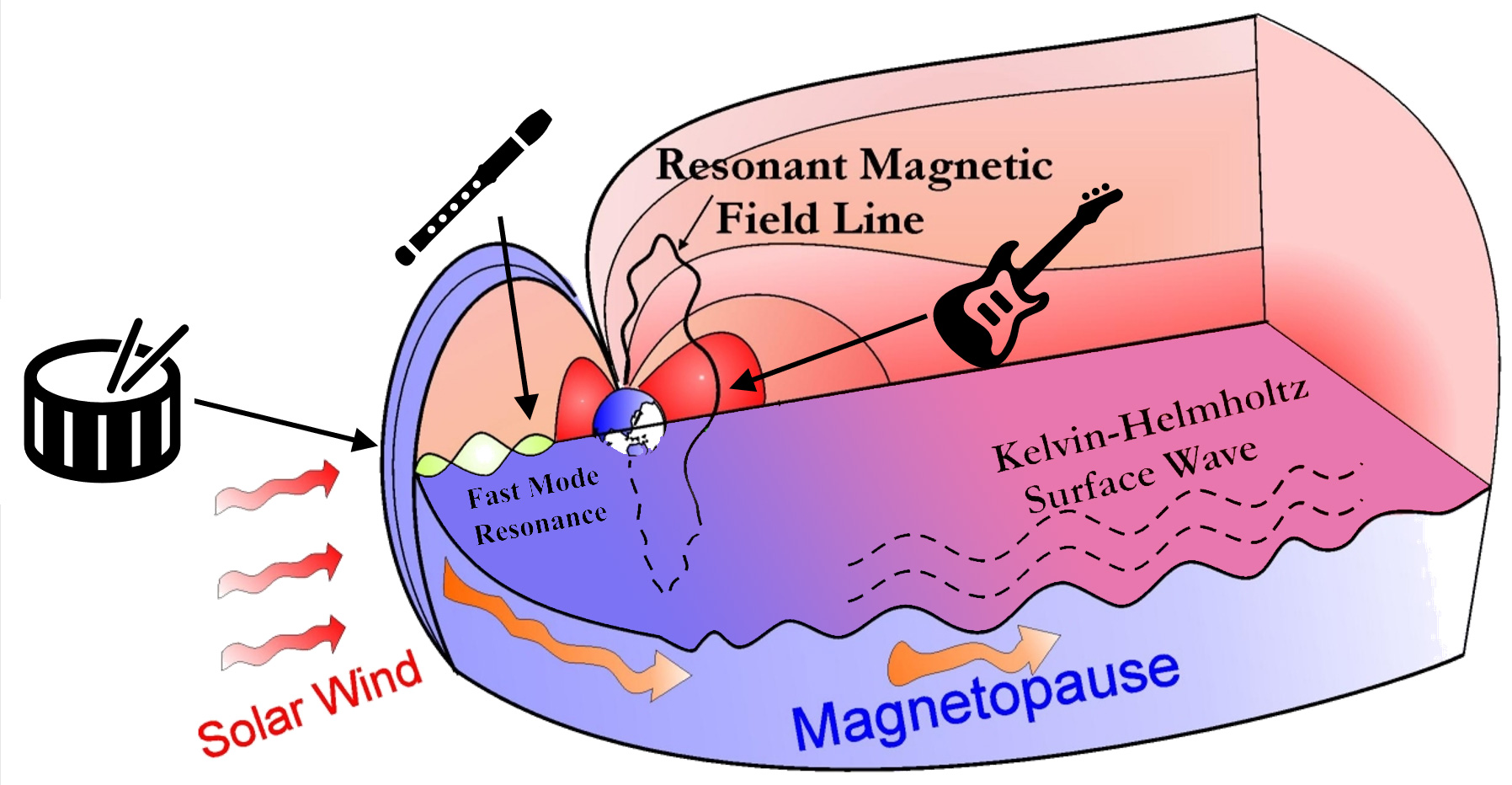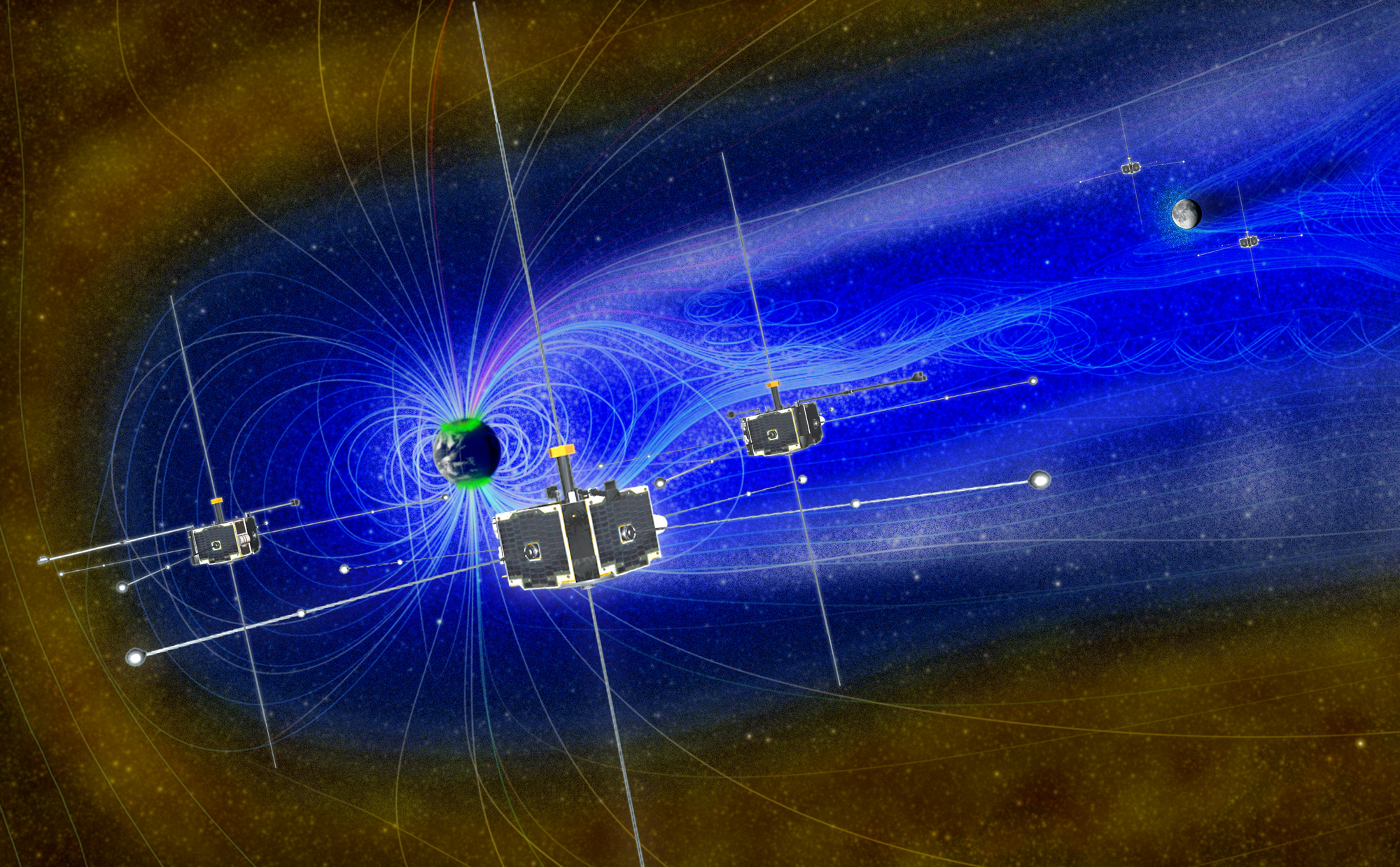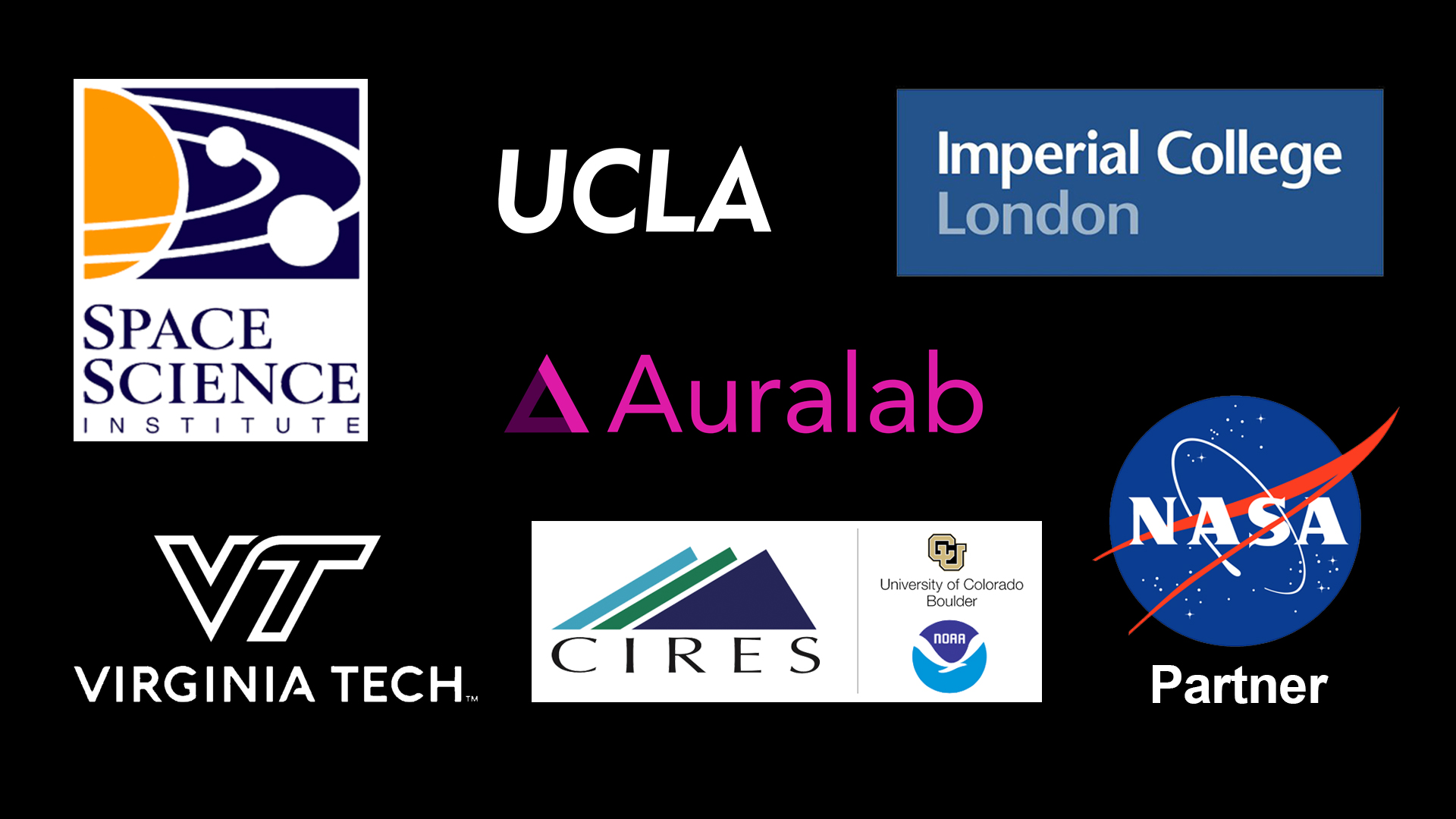By Emmanuel Masongsong, UCLA EPSS, SPACE Institute
Listen to space: new HARP app lets the public help researchers hunt for magnetic waves
Learn about the HARP project, where you can help researchers identify plasma waves and improve their models of space weather. | Credit: HARP Team, NASA, NCSA-AVL-UIUC, U. Calgary
As civilization becomes more and more reliant on satellite technology, we have also become increasingly vulnerable to disruptions caused by solar activity. Known as space weather, eruptions on the sun can pose hazards to satellites, astronauts, and even communications and power infrastructure on the ground — a recent UCLA study even showed how space weather can influence animal behavior.
Now, an international team led by researchers from UCLA and the Space Science Institute (SSI) invites the public to join NASA scientists in the search for space weather signals, magnetic vibrations around Earth called plasma waves. This new project, Heliophysics Audified: Resonances in Plasmas, or HARP, has just released a web app that takes satellite magnetic data and converts it into sounds that the public can listen to and classify. See the NASA press release here.
Plasma waves arise when charged particles from the sun impact Earth’s magnetic field, causing it to vibrate or resonate, unleashing radiation that can potentially damage spacecraft. On the brighter side, plasma waves can also generate the beautiful northern and southern lights. Results from the HARP analysis can be fed into space weather models to improve predictions and help clarify the mysterious processes that govern the auroras.
Plasma waves in Earth’s environment are invisible, but they can influence the formation of the aurora. Pulsating and shimmering regions appear when charged particles impact Earth’s upper atmosphere, making it glow. | Credit: Auroral Imaging Group, U. Calgary
“Earth’s magnetic field and plasma waves are invisible to cameras,” said Mike Hartinger, principal investigator at SSI and a researcher in the UCLA Department of Earth, Planetary, and Space Sciences (EPSS). “HARP uses data collected by NASA’s THEMIS satellites traveling through the changing magnetic environment around our planet, where plasma waves can form.”
Just as seismologists use earthquake vibrations to “see” inside the Earth, HARP uses magnetic vibrations to investigate how space weather evolves around our planet in response to the Sun’s activity.
 Plasmas are charged particles that emanate from the sun, which blows a solar wind in continuous streams and explosive eruptions. When the solar wind impacts Earth’s magnetic field, different types of plasma waves can form, analogous to vibrations formed by different musical instruments. | Credit: Q. Zong, Peking Univ.; M.O. Archer, Imperial College London; M. Hartinger, SSI, UCLA EPSS
Plasmas are charged particles that emanate from the sun, which blows a solar wind in continuous streams and explosive eruptions. When the solar wind impacts Earth’s magnetic field, different types of plasma waves can form, analogous to vibrations formed by different musical instruments. | Credit: Q. Zong, Peking Univ.; M.O. Archer, Imperial College London; M. Hartinger, SSI, UCLA EPSS
HARP expands upon a pilot project in the UK led by team member Martin Archer of Imperial College London, in which high school students found a new complex pattern of plasma waves and became co-authors in a peer-reviewed journal publication. Studies show that people’s eyes and ears in combination are better at finding hidden wave patterns than using computer algorithms or eyes alone. Anyone can work with NASA satellite data with just a few minutes of training and make an important contribution to space science.
“We need the public’s help to identify plasma waves in huge datasets gathered over the past 16 years by NASA’s THEMIS satellites,” said Hartinger.
HARP users will be greeted with a brief tutorial, where they listen to the satellite data simultaneously while viewing it in a graph of frequency and intensity vs. time, called a spectrogram. Users can draw boxes around interesting features and describe their characteristics, such as changes in pitch or whether there are single or multiple tones, and jot down any other observations.
“Space weather is more relevant than ever, as we send unprecedented numbers of satellites into orbit and depend on this infrastructure for our research, GPS, weather, and communications on a daily basis,” said Vassilis Angelopoulos, professor in UCLA EPSS and principal investigator of the THEMIS mission.
 NASA’s five THEMIS satellites were launched in 2007 to study how energy in Earth’s magnetic field powers the aurora. In 2011 two of the probes were sent to study space weather around the moon and renamed ARTEMIS. | Credit: E. Masongsong, UCLA EPSS; NASA SVS
NASA’s five THEMIS satellites were launched in 2007 to study how energy in Earth’s magnetic field powers the aurora. In 2011 two of the probes were sent to study space weather around the moon and renamed ARTEMIS. | Credit: E. Masongsong, UCLA EPSS; NASA SVS
UCLA has been at the forefront of space weather research for decades, with a legacy of building magnetic sensors and managing missions to study plasma waves around Earth, the moon, Mars, and on Jupiter’s moon, Europa. Angelopoulos also oversaw the successful ELFIN CubeSat space weather mission, developed and built primarily by UCLA undergrads. A separate student-based research team also in EPSS, called SMART, builds ground magnetic sensors that record the influence of space plasmas on the ground across North America.
Although HARP currently uses only one satellite mission, the next step is to add other heliophysics satellites and data sources to incorporate more types of plasma waves throughout the solar system. The public holds the key to the success of HARP and can hasten future discoveries, so check out the website and sign up today!
Website: listen.spacescience.org
Instagram: @listen2space
See HARP covered in: NPR, The Washington Post, & KCRW

